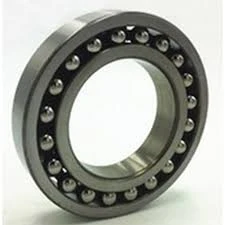
Nov . 30, 2024 04:45 Back to list
tapered roller bearing vs spherical roller bearing
Tapered Roller Bearings vs. Spherical Roller Bearings A Comparative Analysis
When it comes to choosing the right bearing for specific applications, engineers and designers often find themselves weighing their options between tapered roller bearings and spherical roller bearings. Both types of bearings serve crucial roles in machinery and equipment, yet they possess distinct characteristics and benefits that cater to different operational needs. This article aims to explore the features, advantages, disadvantages, and applications of these two popular bearing types.
Tapered Roller Bearings
Tapered roller bearings are designed to accommodate both axial and radial loads. They consist of an inner and outer ring with tapered raceways and conical rollers that facilitate alignment. The tapered shape allows the rollers to make contact with the raceways at a single point, resulting in an efficient load distribution. This design provides enhanced stability, especially in applications where heavy loads are present.
Advantages 1. Load Capacity The tapered design allows for higher load capacities, making them ideal for heavy machinery applications. 2. Versatility Tapered roller bearings can handle combined loads, meaning they can effectively manage both radial and axial forces. 3. Adjustable Clearance These bearings can be preloaded or adjusted for clearance, leading to improved performance in dynamic applications.
Disadvantages 1. Installation Complexity They require precise installation and alignment, which can be challenging. 2. Maintenance Needs Regular maintenance and periodic adjustments may be necessary to ensure optimal performance.
Applications Tapered roller bearings are commonly utilized in automotive wheel hubs, gearboxes, and machinery where high load capacities are required
.Spherical Roller Bearings
tapered roller bearing vs spherical roller bearing

Spherical roller bearings are known for their ability to accommodate misalignment, thanks to their unique design that includes a self-aligning capability. They have two rows of symmetrical rollers and an inner ring with a spherical raceway that allows for a certain degree of angular misalignment.
Advantages 1. Self-Alignment The spherical shape of the outer ring enables the bearing to maintain functionality even when misalignment occurs, which is crucial in your applications where shaft displacement can happen. 2. Higher Load Capacity With a robust design, spherical roller bearings can handle radial loads and moderate axial loads, thus making them suitable for heavy machinery. 3. Durability They often have higher resistance to wear and operational stresses, leading to a longer service life.
Disadvantages 1. Radial Load Preference These bearings are less effective in applications that require high axial load handling compared to tapered roller bearings. 2. Cost Spherical roller bearings can be more expensive than their tapered counterparts, depending on the specific design and materials used.
Applications Spherical roller bearings are extensively used in industries like mining, construction, and energy production, especially in applications involving conveyor systems and wind turbines due to their ability to handle heavy loads and misalignment.
Conclusion
In summary, both tapered roller bearings and spherical roller bearings have their own set of advantages and limitations, making them suitable for varied applications. Tapered roller bearings shine in environments requiring high load capacity and adjustable clearance, while spherical roller bearings excel in scenarios where misalignment is a concern.
The decision to choose one over the other should be based on the specific requirements of the application, including load type, alignment conditions, and maintenance considerations. By understanding these key differences and advantages, engineers can make informed decisions that enhance the efficiency and longevity of their machinery.
Latest news
-
Premium Deep Groove Ball Bearings | High Speed & Reliability
NewsAug.29,2025
-
Durable Scaffolding Clamps - Secure & Reliable Tube Connectors
NewsAug.28,2025
-
Common Failures in Thrust Ball Bearings and Solutions
NewsAug.22,2025
-
How Tapered Roller Bearings Can Take Shock Loads
NewsAug.22,2025
-
Angular Bearings in High-Precision Spindles
NewsAug.22,2025
-
The Impact of Misalignment on Cylindrical Roller Bearing Performance
NewsAug.22,2025
